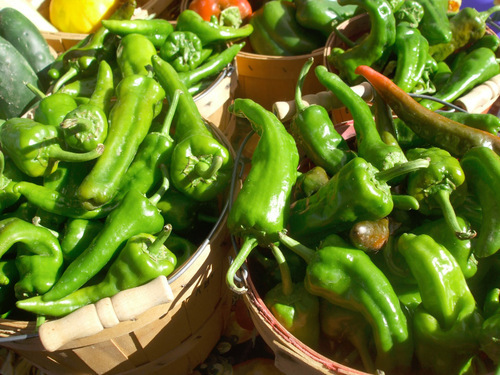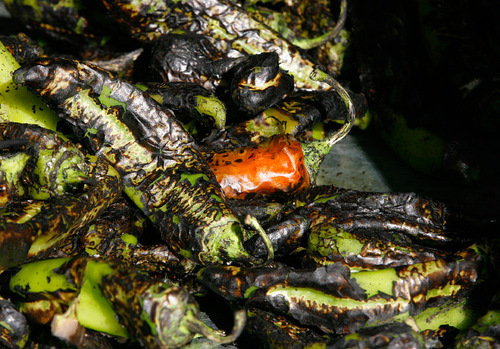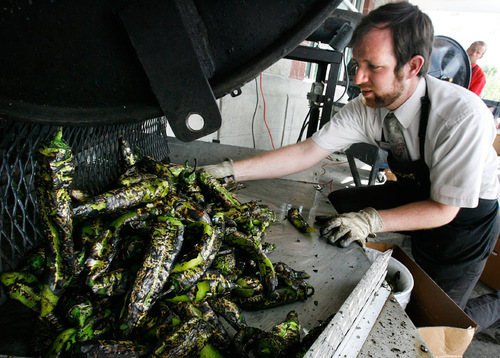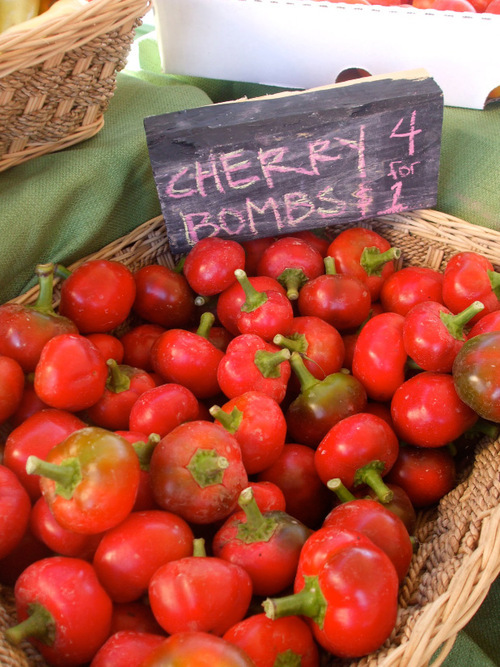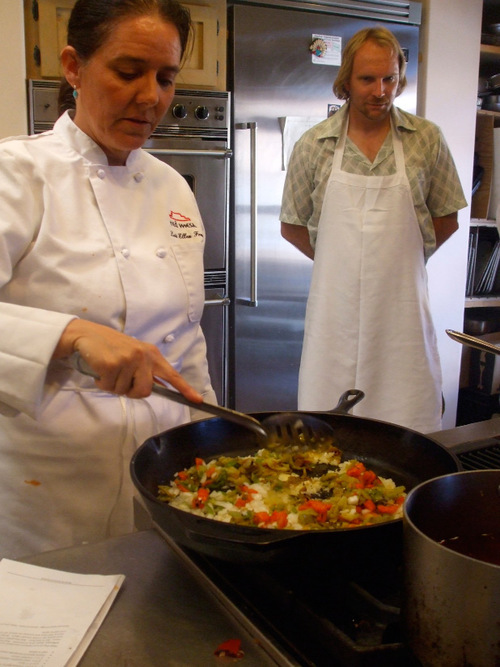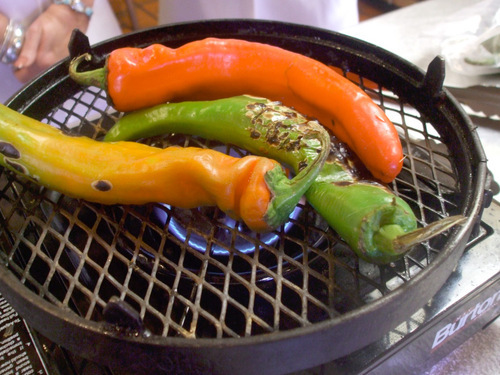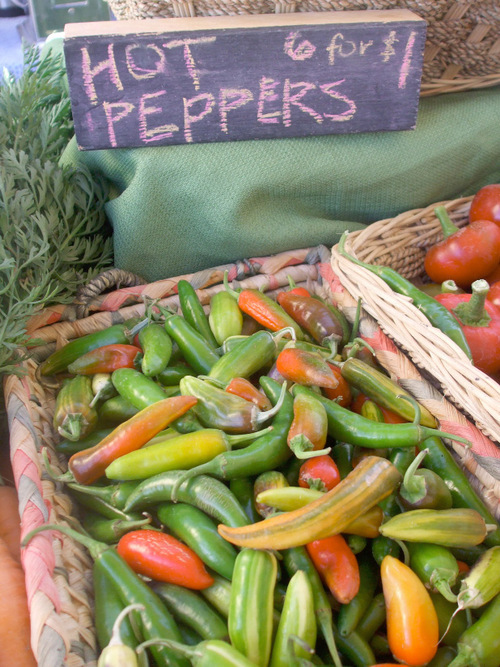This is an archived article that was published on sltrib.com in 2010, and information in the article may be outdated. It is provided only for personal research purposes and may not be reprinted.
Santa Fe, N.M. • New Mexico may be the only state in America with an official question: red or green?
Residents are referring, of course, to the color of chile sauce — or the "gravy of New Mexico"— that's smothered on just about every meal from enchiladas and burritos to eggs and even hamburgers.
This time of year, green chile sauce is the favorite. It's made with the fresh New Mexico chiles that are being harvested all around the state, particularly the huge commercial operations in Hatch, several hours south of the capital city. These green chiles are long and narrow and range from 4 to 10 inches in length. They are roasted over an open flame, the dry heat blistering their plastic-like skins and bringing out their rich flavors.
Residents buy these blackened chiles by the bushel full, taking them home to peel, seed, chop and freeze for use all year long.
When the green chiles are allowed to ripen on the plant they turn red. They can be eaten fresh, but they are typically dried in the sun for use during the long New Mexico winter.
It's these dried chile pods that are used to make New Mexico's famous red sauce. Cooks use them two different ways. Some hydrate the dried pods in water before blending with onions and spices. Others grind the dried pods into a powder, which is then used to make a sauce.
Which kind of sauce has better flavor is a matter of personal taste and a subject of great debate.
"When I first moved here, red was my favorite," Louis Moskow, the chef and owner of 315 Restaurant and Wine Bar in Santa Fe, told members of the Association of Food Journalists during their annual conference. "But today I lean toward the green."
Many people are like Katharine Kagel, chef/owner of Cafe Pasqual's, who doesn't like to pick a favorite. "I don't want to miss anything," she told food writers.
Fortunately, she has another option: Christmas. Order it that way and your plate comes with half green sauce and half red.
As you can see, New Mexicans today take their chiles seriously, just as they have for the last 6,000 years. The chile originated in South America and spread into Central America, Mexico and the Caribbean. It was cultivated as a food crop as early as 4000 B.C. and was considered an indispensable food. It was eaten fresh, dried, smoked and roasted. It was added to just about everything including chocolate drinks.
Today, farmers in New Mexico grow all sorts of chiles.
On a recent Saturday morning at the Santa Fe farmers market, there were more than a dozen types of chiles for sale — from mild green Shishito peppers to red cherry bombs and yellow banana peppers.
The fascination with the chile continues all the way to spelling. Real chile, they say, is spelled with an "e" at the end, following the traditional Spanish spelling. Chili with an "i" is a bowl of meat and beans — but most likely flavored with ground chile. This Texas meal has its place, but when New Mexicans talk about chile, they are talking about the peppers and the sauce.
Novices, of course, seem more interested in heat than color.
Generally, the wider the shoulders of the chile, the milder the flavor. But many things can affect the heat level, explained chef and researcher Lois Ellen Frank during a recent chile class offered at The Santa Fe School of Cooking. Factors include the variety of chile, the soil in which it's grown, the altitude, the temperature, the amount of water, even the time of harvest.
For example, the New Mexico variety of chiles grown in the southern part of the state, where Hatch is located, are hotter than those grown farther north in Chimayo, which has more mild conditions. Years ago, when someone took the seeds of a New Mexico chile and planted them in Southern California, the chile became a new variety known as the Anaheim, a rather mild pepper.
"There's really no hard-and-fast rule," said Rocky Durham, the culinary director of the Santa Fe cooking school. "There's no way to tell visually how hot a pepper is."
But for Durham, all this talk of heat is missing the most important point of the chile — the depth of flavor it adds to food.
"When it comes to chiles, people always want to talk about heat, but they are so much more than that," he said. "It's like discussing wine and only talking about the alcohol."
Red chile sauce (from pods)
12 New Mexican dried red chile pods, preferably Chimayo or guajillo
1/4 cup vegetable oil
1 cup finely chopped onion
2 to 3 teaspoons minced garlic
Salt to taste
Rinse the pods well. Remove the stems from the chiles and shake out the seeds. Bring 2 to 3 cups of water to a boil in a sauce pan. Place the pods in a pan and let them soak for 30 minutes. (You may want to put a weight on the chiles to keep them submerged, as they have a tendency to float.)
Meanwhile, heat the oil in a frying pan. Add onions and saute for 3 minutes until softened. Add garlic and cook 2 minutes more. Remove from heat.
Drain the chiles, reserving the liquid. Place half the chiles in a blender and add 1 1/2 cup soaking liquid and half the sauteed onion/garlic mixture. Puree. Add more soaking liquid if the mixture seems too thick.
Repeat the process with the remaining chiles and 1 cup soaking liquid.
Pour the puree in to a medium saucepan and bring to a boil. Reduce heat to low and simmer 20 minutes. Strain the sauce and discard any bits of skin. Serve the sauce over burritos, enchiladas, huevos rancheros or any recipe that calls for chile sauce.
Optional seasonings: toasted chile seeds, Mexican oregano, freshly ground coriander seeds.
Servings • 3 cups
Source: Lois Ellen Frank and The Santa Fe Cooking School —
Red chile sauce (from powder)
1/4 cup vegetable oil
1/2 cup finely diced onion
2 to 3 teaspoons minced garlic
1/2 cup pure ground red chile powder (Chimayo recommended)
2 1/2 cups water
Salt
Heat oil in a medium saucepan. Add onion and saute until softened, 3 to 4 minutes. Add garlic and saute 2 minutes more.
Stir in chile powder and slowly add water, whisking to break up any lumps in the chile. Reduce the heat and simmer for about 20 minutes or until the mixture has thickened slightly. Season with salt. Serve the sauce over burritos, enchiladas, huevos rancheros or any recipe that calls for chile sauce.
Optional seasonings: dried Mexican oregano, freshly ground cumin seed, freshly ground coriander seed.
Servings • 3 cups
Source: Lois Ellen Frank and The Sante Fe Cooking School —
Green chile sauce
1/4 cup vegetable oil
1 cup chopped onion
2 to 3 teaspoons minced garlic, to taste
2/3 cup mild green chiles that have been roasted, peeled and chopped
1 1/2 cup chicken stock
Salt to taste
Heat oil in a medium saucepan. Add onion and saute until softened, 3 to 4 minutes. Add garlic and saute 2 minutes more. Add green chiles and slowly stir in chicken stock. Place half the mixture in a blender and puree. Return to pan. Bring mixture to a boil. Reduce heat and simmer about 25 minutes. Season with salt. Serve the sauce over burritos, enchiladas, huevos rancheros or any recipe that calls for chile sauce.
Optional seasonings: freshly ground coriander, diced tomato, fresh cilantro. Servings • 4 cups
Source: Lois Ellen Frank and The Santa Fe Cooking School


